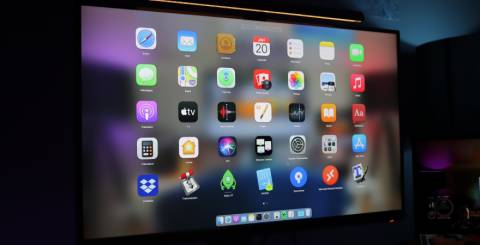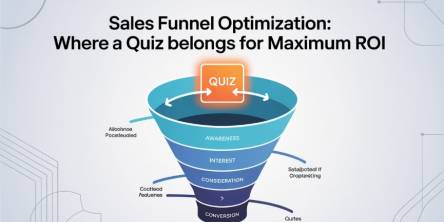Best Practices for Application Modernization in 2023

Today, Application modernization is a critical priority for organizations aiming to stay competitive and meet the demands of the digital age. And as we enter 2023, it's essential to explore the top best practices for application modernization that can help organizations transform their legacy systems into modern, agile, and scalable applications. Therefore whether it's migrating to the cloud, adopting microservices architecture, or embracing containerization, these best practices provide a roadmap for successful application modernization initiatives.
In this blog, I'll delve into the top application modernization best practices to follow in 2023, empowering organizations to revitalize their applications, enhance user experiences, and unlock new opportunities for growth and innovation.
What are Legacy Applications?
An outdated software program is termed a legacy application. While a legacy app can work, compatibility issues with the current operating systems, browsers, or IT infrastructure can make it unstable.
Many enterprises continue to use such legacy applications to serve critical business needs. Most businesses face the challenge of keeping legacy applications up and running while trying to upgrade apps to newer and more efficient versions that use current technology.
Best Practices for Application Modernization
In a constantly evolving modern world, businesses must develop seamless applications that offer reliable, secure, scalable, and integrated applications. Companies must follow some best practices to strengthen and empower themselves to meet consumer requirements.
- Microservice approach - One of the methods is the microservice approach. By breaking down an application into smaller, independent service apps, makes it easier to adopt the modernization process. The services have their logic and database and can be scaled with higher agility.
- Prioritize applications - Applications that need to be modernized must be identified and prioritized as per the business requirement. It is equally important to know and evaluate the risks associated with modernization and take the approach to help reduce them. It's necessary to weigh and assess the costs and time required to modernize the application. This evaluation can help establish the viability of upgrading the application.
- Effective modernizing strategy - Depending on the complexity of the legacy application, the business needs to identify and establish which modernization technique works best and can be leveraged while considering factors like time, cost, scalability and technologies. Several ways to modernize the application include re-architecture or refactoring, rewriting, ripping, replacing, or rehosting.
- Overcoming user concerns - Users are generally reluctant and feel indifferent towards change and application modernization is no different. As they are used to using the application daily, modernization makes them change their way of working, taking them out of their comfort zone. Therefore it is necessary to effectively communicate the need for modernization, detailing the benefits these changes would bring once the application is upgraded and modernized. All changes should be documented, with tips on how to use the changes to get the best out of the system with better outcomes.
- Migration checklist - Mordernsastion is not just about moving the applications to the cloud; it requires planning. Legacy systems contain volumes of data; the company must know which and how much data is to be transferred. Documenting and creating checklists makes it easier for companies while transferring data. It's also necessary to note how the data is represented, how it can be migrated to the new system, and the format needed. Along with tests to ensure the migrated data is accurate, relevant, up-to-date and consistent.
- Full stack visibility - Applications that have been modernized need communication with legacy systems. Complete visibility of these applications to the cloud is critical. Full stack visibility allows monitoring performance from the end-users perspective, which helps identify potential problems and issues before reaching the end user.
- Performance metrics - These metrics help track the application performance from code level and also monitor the complete infrastructure from networks and databases to the cloud. Performance metrics allow companies to identify errors, problems, and areas that need further improvement.
- Security - Legacy applications usually have low-level security and must be addressed to avoid organization-wide security challenges. Embedding security at every process stage must be done diligently and considered a central requirement for the app modernization process. Data encryption with strong authorization measures and access controls is essential.
Benefits of Application Modernization
- Reduced maintenance and operating costs - Application modernization can help lower maintenance and running costs. Legacy systems and applications are kept in use mainly due to the high costs of replacing them. Unfortunately, the price of using them can be very high in the long term since updating or maintaining them may not be possible.
- Performance - Over time, it becomes difficult to support legacy systems and applications, and it causes difficulties for the operations team to keep these running. This leads to performance issues, higher resource consumption, and frequent failures and crashes. Such problems can weaken the competitive advantage of companies. Application modernization can enable businesses to use digital technologies like AI, ML, Big data, and cloud services. It helps businesses to adopt the best and most relevant IT ecosystem to develop a flexible platform for innovation. It helps integrate features and functionalities to increase uptime.
- Data silos - Data silos are data storages that can be shared within the organization. Many legacy systems or applications may be unable to integrate with new software, making accessing the data stored in such legacy systems difficult. App modernization enables data access across organizations.
- Compliance - Legacy systems and applications may not meet current compliance standards. Such issues can lead to penalties, fines and even security breaches. Modernization enables compatibility with existing platforms and devices.
- Support and security - Since updating, maintaining, or supporting legacy systems and applications is almost impossible; these systems must depend on outdated security measures or patches. Such methods or applications are prone to security breaches. Modernization helps ensure that security and support updates are available across systems consistently and regularly, increasing data security and the fight against new threats.
- Better customer experience - Outdated applications and systems are slow and cannot help provide a best-in-class customer experience. Modernizing legacy applications can enable businesses to utilize cloud environments and current technological upgrades.
In Conclusion, modernizing legacy applications is not a simple process and requires time, effort, and money. But the result enables businesses to offer better services, with better security, reliability & efficiency to the customers. Companies must prioritize the applications that need to be modernized, evaluate and determine which strategy fits the best by connecting with an enterprise application modernization service company.
Similar Articles
Hospitals operate in environments where availability and patient safety are paramount at all times. As medical supply chains expand and regulatory oversight becomes more demanding, manual tracking methods introduce delays and risk.
Every sales funnel has one core goal: turn attention into revenue as efficiently as possible. Yet many funnels leak value at critical stages—visitors bounce, leads go cold, and sales teams chase prospects who were never a good fit.
Decentralized Finance (DeFi) has transformed how users earn passive income through blockchain-based financial systems. Among its most popular use cases,
Staying organized can feel like a full-time job. Between meetings, deadlines, and personal commitments, it’s easy to get overwhelmed.
Choosing the right GIS mapping software depends on what you need to accomplish. Some platforms cater to developers who want to build custom applications from scratch.
For data intensive industries such as insurance, the global business landscape is undergoing a profound transformation. Thanks to all the relentless technological innovation, this shift presents both significant challenges and unparalleled opportunities for modernization of the insurance sector.
Organizations are always looking for newer technologies to aid their operations. So, this hunt revolves around solutions that offer not only agility and scalability but are also cost-effective.
Not long ago, the idea of multiple AI agents working together, each with a specific role, collaborating to solve problems, felt like science fiction.
In today’s data-driven world, choosing the right business intelligence (BI) platform can make or break your organization's analytics success.









